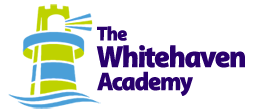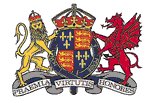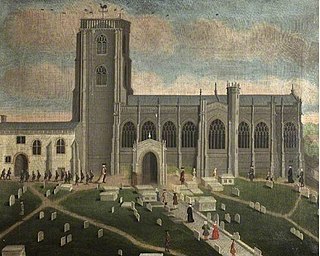
Cumbria is a ceremonial county in North West England. It borders the Scottish council areas of Dumfries and Galloway and Scottish Borders to the north, Northumberland and County Durham to the east, North Yorkshire to the south-east, Lancashire to the south, and the Irish Sea to the west. Its largest settlement is the city of Carlisle.

Appleby-in-Westmorland is a market town and civil parish in Westmorland and Furness, Cumbria, England, with a population of 3,048 at the 2011 Census. Crossed by the River Eden, Appleby is the county town of the historic county of Westmorland. It was known just as Appleby until 1974–1976, when the council of the successor parish to the borough changed it to retain the name Westmorland, which was abolished as an administrative area under the Local Government Act 1972, before being revived as Westmorland and Furness in 2023. It lies 14 miles (23 km) south-east of Penrith, 32 miles (51 km) south-east of Carlisle, 27 miles (43 km) north-east of Kendal and 45 miles (72 km) west of Darlington.

St. Olave's Grammar School is a selective secondary school for boys in Orpington, Greater London, England. Founded by royal charter in 1571, the school occupied several sites in Southwark, before establishing a location on Tooley Street in 1893. It moved to the suburb of Orpington in 1968, and has admitted girls to its sixth form since 1998.

Penrith is a market town and civil parish in the Westmorland and Furness district of Cumbria, England. It is less than 3 miles (5 km) outside the Lake District National Park and about 17 miles (27 km) south of Carlisle. It is between the Rivers Petteril and Eamont and just north of the River Lowther. The town had a population of 15,181 at the 2011 census. It is part of historic Cumberland.

Newstead Wood School is a selective girls' grammar school in Avebury Road, Orpington, south east London, England.

Queen Elizabeth's Grammar School (QEGS) is a co-educational state-funded comprehensive free school in Blackburn, Lancashire, England. Founded in 1509 as a boys' school, it is now a co-educational all-through free school with over 1200 students from ages 4 to 18. Pupils come from a very wide geographical area, from Bolton to the south and to Colne in the east. It consists of an Infant School, Junior School, Senior School and Sixth Form.

The Royal Latin School (RLS) is a co-educational grammar school in Buckingham, England. It has continually existed for over six hundred years; receiving a Royal Charter in this time and moving premises three times. In September 2011 the school became an academy. It takes children from the age of 11 through to the age of 18 and has over 1260 pupils, including a sixth form of 390 pupils. Every year it takes in 174 pupils, either those who passed the 11+ or were qualified by a Selection Review panel. It maintains a staff of just over 160. In September 2003 the school was designated by the Department for Education and Skills (DfES) as a specialist school in science. It was successfully re-designated in 2007 and achieved a second specialism as a training school.

Clifton is a small linear village and civil parish in Cumbria, England. Historically part of Westmorland, it lies 3 miles (4.8 km) south east of Penrith.
The Nelson Thomlinson School is a comprehensive secondary school located in the market town of Wigton, Cumbria, England. The school's motto is the Latin phrase Fide et Operis, "Faith and Works". The position of Headteacher has been occupied by David Samuel Northwood since September 2011, after the former head, Janet Downes, retired at the end of the previous academic year.

Queen Elizabeth's Grammar School, Alford (QEGS) is a selective, co-educational, academy status Grammar School and Sixth Form in Alford, Lincolnshire, England. In 2021, the school held 544 pupils.

Queen Elizabeth's School (QEGS) is a non-selective academy school for 11- to 18-year-olds in the town of Ashbourne, Derbyshire, England. In the academic year 2009–10, there were 1,396 pupils on roll.
Ullswater Community College (UCC) is a large mixed comprehensive school in Penrith, Cumbria. It currently has around 1520 students, including about 200 in the sixth form.

Enfield Grammar School is a boys' comprehensive school and sixth form with academy status, founded in 1558, situated in Enfield Town in the London Borough of Enfield in North London.

Appleby Grammar School is a co-educational comprehensive secondary school and sixth form in Appleby-in-Westmorland for students aged 11 to 18. Since 2011, it has been an Academy. Until 2013, the school was a registered charity.

The Whitehaven Academy is a comprehensive co-educational secondary school with academy status, located in Whitehaven, in west Cumbria, England. The school was established in 1984.

Norwich School is a selective private day school in the close of Norwich Cathedral, Norwich. Among the oldest schools in the United Kingdom, it has a traceable history to 1096 as an episcopal grammar school established by Herbert de Losinga, first Bishop of Norwich. In the 16th century the school came under the control of the city of Norwich and moved to Blackfriars' Hall following a successful petition to Henry VIII. The school was refounded in 1547 in a royal charter granted by Edward VI and moved to its current site beside the cathedral in 1551. In the 19th century it became independent of the city and its classical curriculum was broadened in response to the declining demand for classical education following the Industrial Revolution.

Holme St. Cuthbert School is a primary school which serves the civil parish of Holme St. Cuthbert in the county of Cumbria, United Kingdom. It is located approximately one-and-a-quarter miles north-east of the village of Mawbray, the largest settlement in the parish, and twenty-three miles south-west of the city of Carlisle, Cumbria's county town. As of the 2018-19 academic year, there were sixty-two pupils enrolled in the school. This is just short of the school's capacity of sixty-six pupils. The current headteacher is Mrs Lynn Carini, who took over from Mrs Sheila Daniel in 2014.

Yeovil Grammar School was a grammar school in Yeovil, Somerset, which was founded or refounded about 1860 and closed in 1906 when its only headmaster, Henry Monk, retired.

















